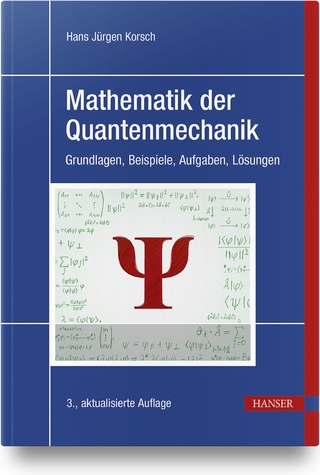
Calculus For Biology and Medicine: Pearson New International Edition
Pearson Education Limited (Verlag)
978-1-292-02226-0 (ISBN)
1. Preview and Review
1.1 Preliminaries
1.2 Elementary Functions
1.3 Graphing
2. Discrete Time Models, Sequences, and Difference Equations
2.1 Exponential Growth and Decay
2.2 Sequences
2.3 More Population Models
3. Limits and Continuity
3.1 Limits
3.2 Continuity
3.3 Limits at Infinity
3.4 The Sandwich Theorem and Some Trigonometric Limits
3.5 Properties of Continuous Functions
3.6 A Formal Definition of Limits (Optional)
4. Differentiation
4.1 Formal Definition of the Derivative
4.2 The Power Rule, the Basic Rules of Differentiation, and the Derivatives of Polynomials
4.3 The Product and Quotient Rules, and the Derivatives of Rational and Power Functions
4.4 The Chain Rule and Higher Derivatives
4.5 Derivatives of Trigonometric Functions
4.6 Derivatives of Exponential Functions
4.7 Derivatives of Inverse Functions, Logarithmic Functions, and the Inverse Tangent Function
4.8 Linear Approximation and Error Propagation
5. Applications of Differentiation
5.1 Extrema and the Mean-Value Theorem
5.2 Monotonicity and Concavity
5.3 Extrema, Inflection Points, and Graphing
5.4 Optimization
5.5 L’Hôpital’s Rule
5.6 Difference Equations: Stability (Optional)
5.7 Numerical Methods: The Newton-Raphson Method (Optional)
5.8 Antiderivatives
6. Integration
6.1 The Definite Integral
6.2 The Fundamental Theorem of Calculus
6.3 Applications of Integration
7. Integration Techniques and Computational Methods
7.1 The Substitution Rule
7.2 Integration by Parts and Practicing Integration
7.3 Rational Functions and Partial Fractions
7.4 Improper Integrals
7.5 Numerical Integration
7.6 The Taylor Approximation
7.7 Tables of Integrals (Optional)
8. Differential Equations
8.1 Solving Differential Equations
8.2 Equilibria and Their Stability
8.3 Systems of Autonomous Equations (Optional)
9. Linear Algebra and Analytic Geometry
9.1 Linear Systems
9.2 Matrices
9.3 Linear Maps, Eigenvectors, and Eigenvalues
9.4 Analytic Geometry
10. Multivariable Calculus
10.1 Functions of Two or More Independent Variables
10.2 Limits and Continuity
10.3 Partial Derivatives
10.4 Tangent Planes, Differentiability, and Linearization
10.5 More about Derivatives (Optional)
10.6 Applications (Optional)
10.7 Systems of Difference Equations (Optional)
11. Systems of Differential Equations
11.1 Linear Systems: Theory
11.2 Linear Systems: Applications
11.3 Nonlinear Autonomous Systems: Theory
11.4 Nonlinear Systems: Applications
| Verlagsort | Harlow |
|---|---|
| Sprache | englisch |
| Maße | 218 x 279 mm |
| Gewicht | 1502 g |
| Themenwelt | Schulbuch / Wörterbuch |
| Mathematik / Informatik ► Mathematik ► Analysis | |
| ISBN-10 | 1-292-02226-4 / 1292022264 |
| ISBN-13 | 978-1-292-02226-0 / 9781292022260 |
| Zustand | Neuware |
| Haben Sie eine Frage zum Produkt? |
aus dem Bereich


